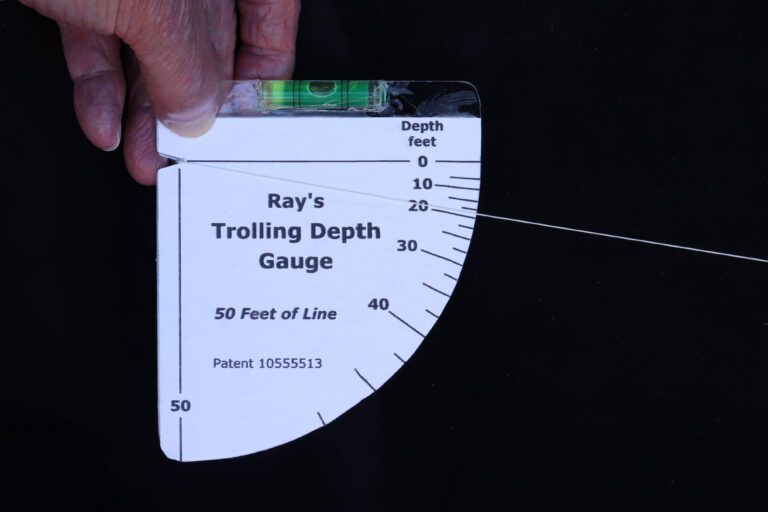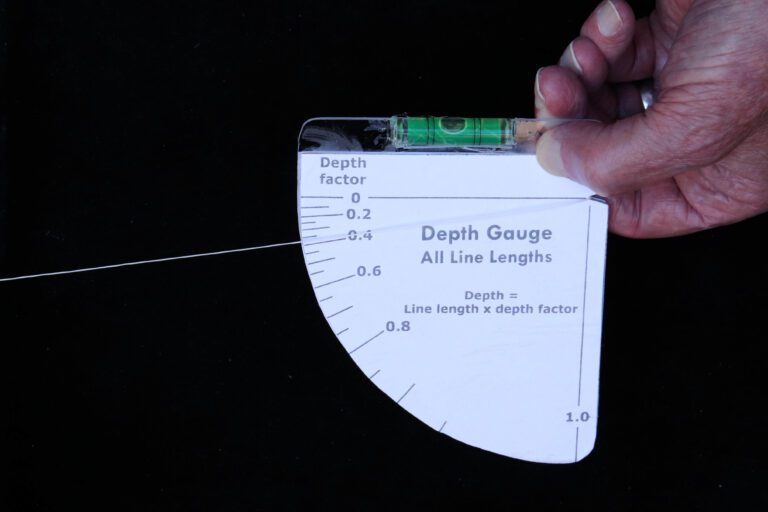Trolling is one of our most popular, versatile and productive fishing methods. Salmon, trout, pike, tuna, mackinaw; almost all saltwater and freshwater fish can be caught using this method.
Conventional trolling, fishing without downriggers, is a simple, easy way to fish using just basic tackle. It takes the bait or lure well behind the boat and may catch boat-shy fish that avoid lures near the boat.
An important unknown is how deep anglers are fishing. Now member Ray Rychnovsky, author of The Troller’s Handbook, has invented and patented Ray’s Trolling Depth Gauge that is simple, inexpensive and takes only seconds to measure the fishing depth from the boat.
Anglers purchase downriggers primarily to measure their fishing depth. But they are expensive, heavy, cumbersome and not practical for rental boats. They add an additional safety concern – the steel cable can get caught in the prop disabling the motor or the weight on the steel cable can snag on the bottom.
Anglers know how deep they should be fishing spotting fish on a fish finder, knowing how deep they caught them on the last fishing trip or asking friends or attendants at bait shop.
Ray, an honors student, found that he could calculate trolling depth using advanced math and scientific principles – the chart shows the profile of the line in the water. After writing a computer code and calculating depth thousands of times he found that the depth could be measured knowing only the length of line between the weight and surface and the angle of the line at the surface. He also found that the gauge was accurate when fishing with weight or lures or diving planes. One morning he woke up with one of those flashes and knew how to design this easy-to-use gauge to measure that elusive trolling depth.
Using the front side of the gauge shown below, let out 50 feet of line measured from the weight or lure to the surface. Insert the line into the notch in the gauge and pinch the line to the back of the gauge. Level the gauge using the built-in level and read the depth where the line aligns with the scale on the gauge — eighteen feet in this photo.
The back side measures the depth with any length of line. The measurement is a depth factor. Multiply this by the length of line out to get the trolling depth.
The best way to measure the length of line out is with a line counter reel but marking the line (50 and 100 feet are good lengths) accurately shows that parameter. Using metered line that changes colors every 10 feet is another way to measure line out. Anglers have developed other ways to make a decent measurement of the line out and the depth.
Now trollers using this gauge can know how deep they are fishing putting their lure or weight at the fish’s depth. They Fish Smarter – Fish Better and Catch more fish.
For more information, contact Ray at Trolling Depth.com. Ask for a complimentary gauge if you want to evaluate it.



